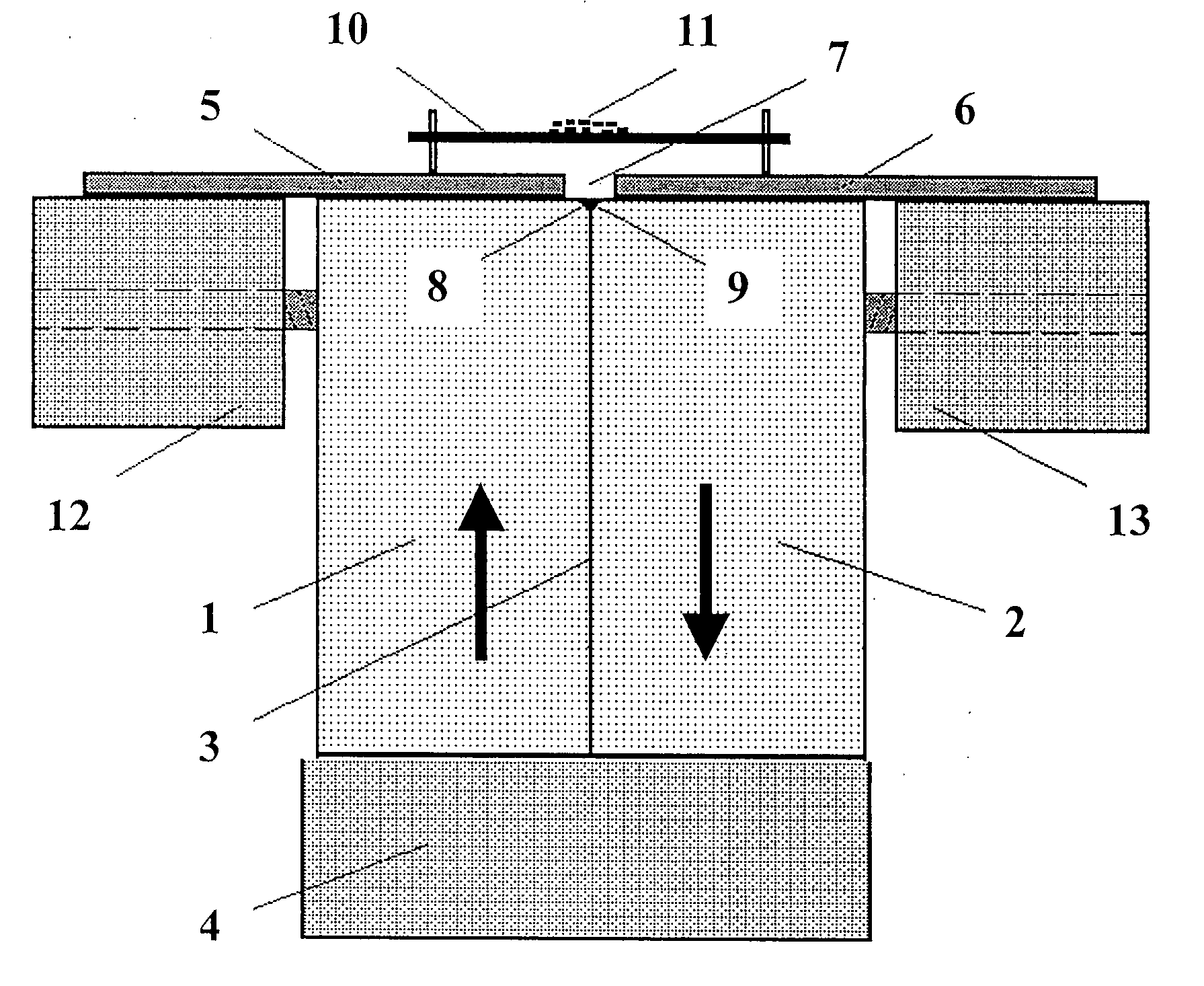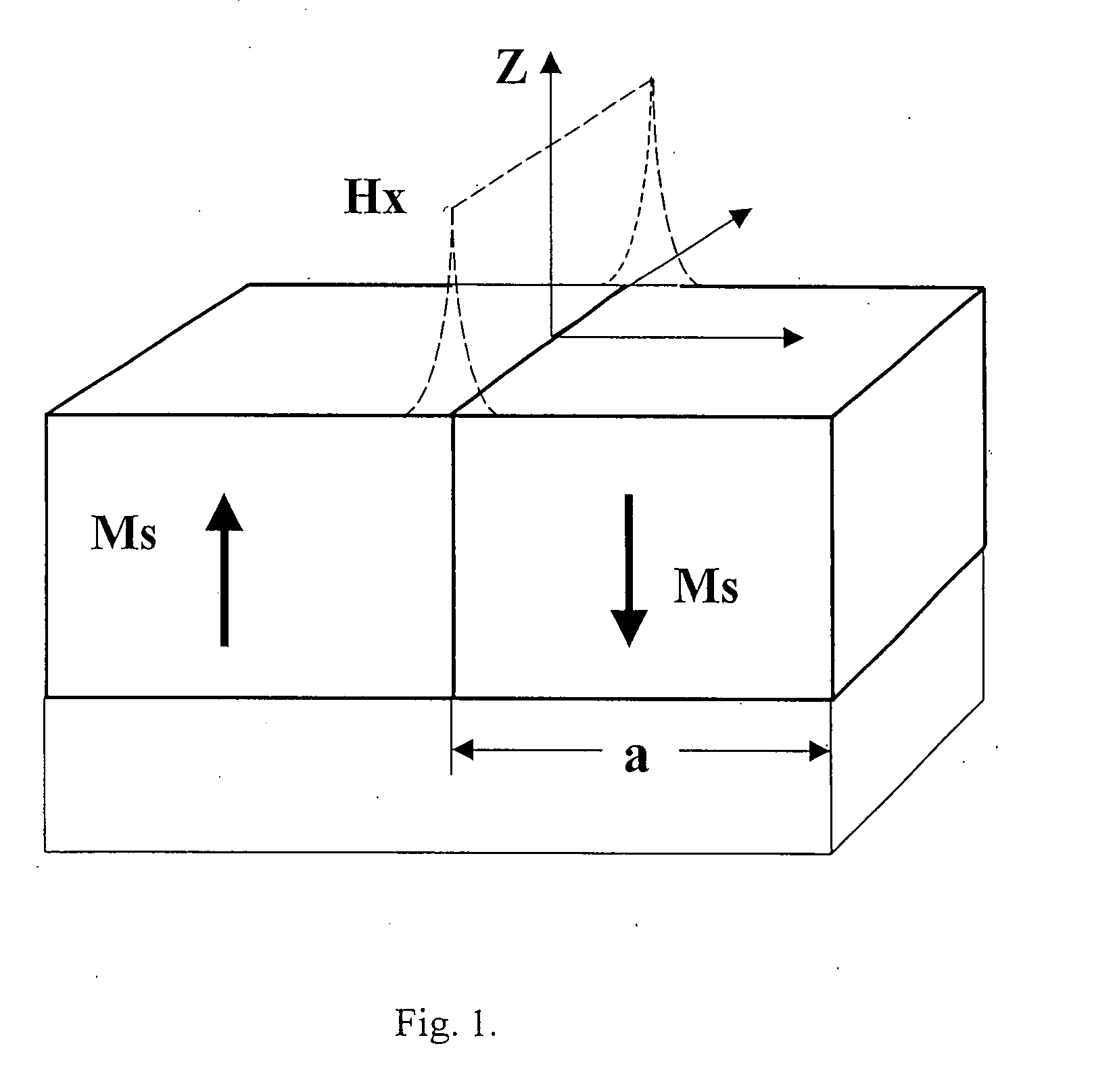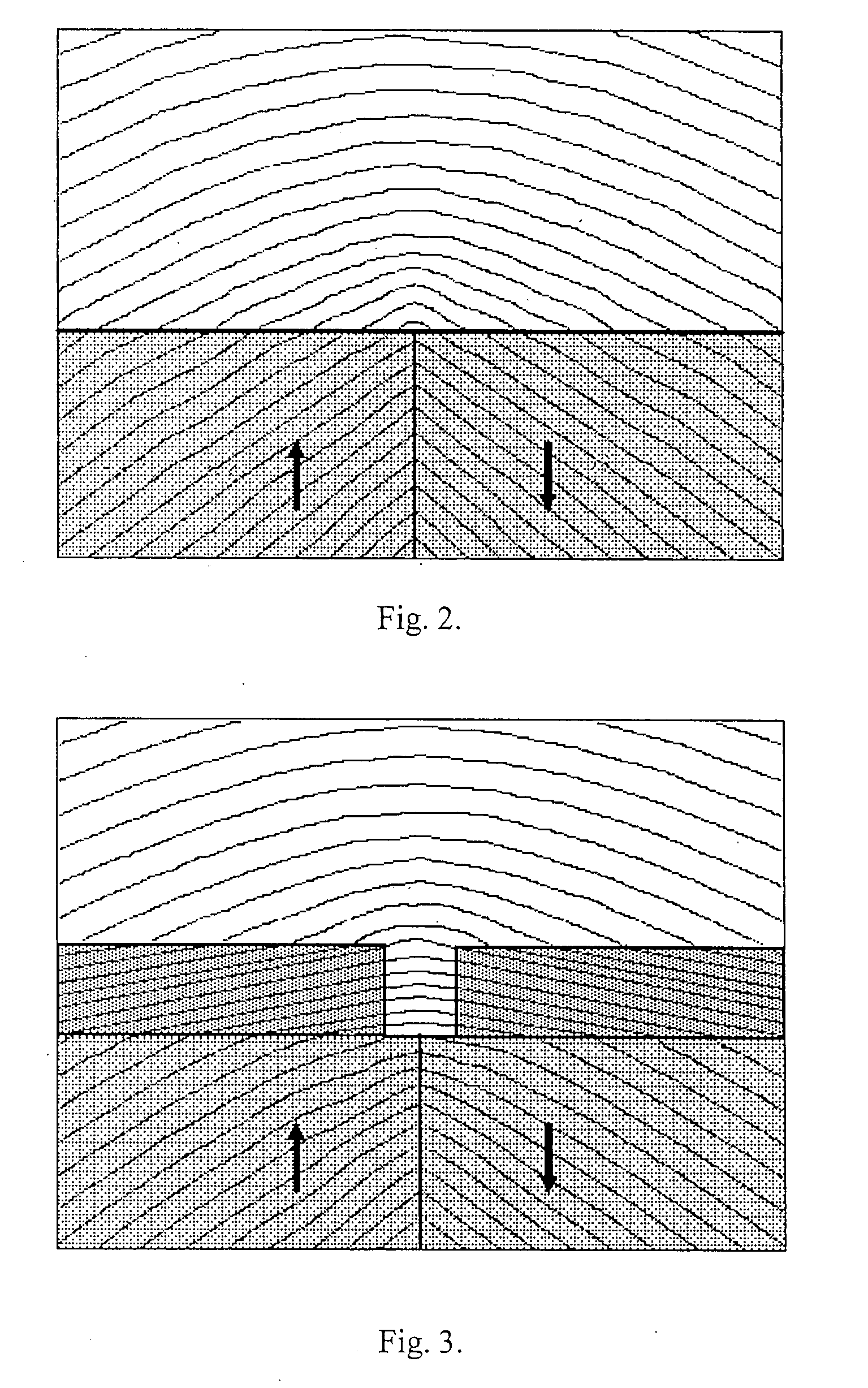Method for forming a high-gradient magnetic field and a substance separation device based thereon
a high-gradient magnetic field and separation device technology, applied in magnetic separation, separation process, filtration separation, etc., can solve the problem that the magnetic separator cannot be used for the separation of paramagnetic and diamagnetic substances and materials, and the practical impossibility of using this system for the separation of substances and materials, so as to increase the magnitude of the product bb and change the parameters of the magnetic field
- Summary
- Abstract
- Description
- Claims
- Application Information
AI Technical Summary
Benefits of technology
Problems solved by technology
Method used
Image
Examples
Embodiment Construction
[0033]The disclosed device (see FIG. 6) consists of two magnets 1 and 2 of a predominantly rectangular shape, with opposite directions of magnetization (shown by arrows in the figure). The magnets are made of a material with a much greater magnetic anisotropy than the induction of a material of magnets, such as neodymium-iron-boron, ironplatinum or samarium-cobalt, for example.
[0034]In experiments sintered neodymium-iron-boron magnets were used with a remnant induction of about 1.3 T, an intrinsic coercive force of magnetization of about 1300 kA / m, and a maximum energy product of about 320 kJ / m3. The size of magnets was 25×50×50 mm.
[0035]The magnets 1 and 2 are joined together along a plane 3 and and their lower sides placed on a basis 4 in the form of a plate made of soft-iron material, for example, with a thickness of 5-25 mm.
[0036]On the upper sides of the magnets 1 and 2, thin plates 5 and 6 are located which are made of a magnetic soft material with high magnetic saturation ind...
PUM
| Property | Measurement | Unit |
|---|---|---|
| Thickness | aaaaa | aaaaa |
| Width | aaaaa | aaaaa |
| Polarity | aaaaa | aaaaa |
Abstract
Description
Claims
Application Information
 Login to View More
Login to View More - R&D
- Intellectual Property
- Life Sciences
- Materials
- Tech Scout
- Unparalleled Data Quality
- Higher Quality Content
- 60% Fewer Hallucinations
Browse by: Latest US Patents, China's latest patents, Technical Efficacy Thesaurus, Application Domain, Technology Topic, Popular Technical Reports.
© 2025 PatSnap. All rights reserved.Legal|Privacy policy|Modern Slavery Act Transparency Statement|Sitemap|About US| Contact US: help@patsnap.com



